Are you considering adding a wind chime to your space?
Modern-day wind chimes are all about the wonderful tunes and soothing music they produce.
But once upon a time, they were used for other purposes, like scaring away ghosts and warding away negative energies.
Did you know the world’s biggest wind chime, 42 feet in height, was designed by Jim Bolin in 2012 and is housed in Casey, Illinois?
If all of this concerns you, you may want to read this post, as we will answer everything you need to know about hanging wind chimes.
All About Wind Chimes
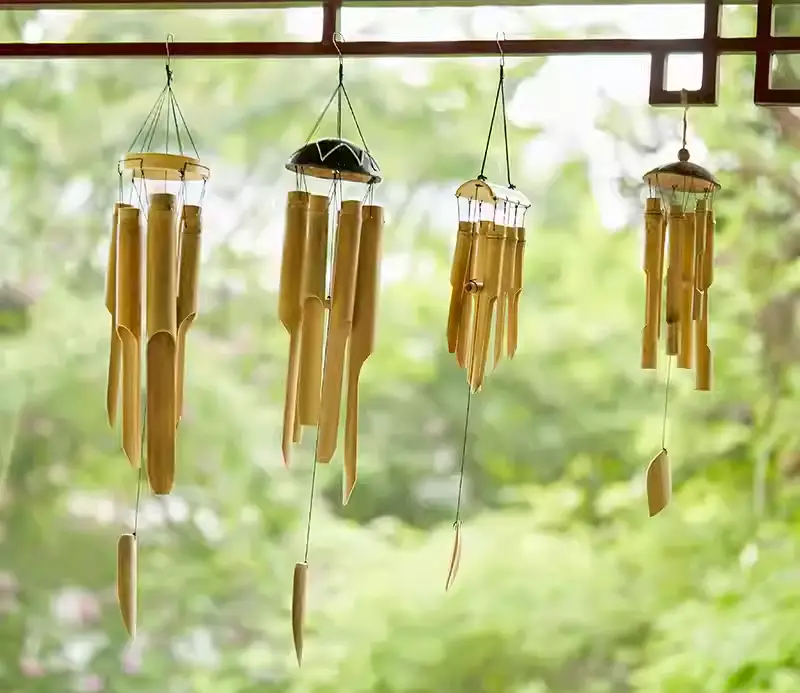
Wind chimes have been around perhaps since 1100 BC, and their inception is associated with Chinese civilization.
They were called Fenglings and were probably used to attract spirits.
During the middle of the 18th century, when Japan opened its gates to the West, wind chimes made their way to the rest of the world from its Eastern confines.
Wind chimes are percussion instruments that can be constructed from a wide range of materials, including glass, metal, wood, bamboo, shells, stone, porcelain, or plastic.
They are usually shaped as tubes or rods and hung and suspended along with other wood or metal objects.
This arrangement allows them to produce a range of inharmonic sounds, from transient tinkling bell-like sounds to deeply sonorous and nearly low bass tones when they strike against each other with the wind in action.
Utility of Wind Chimes
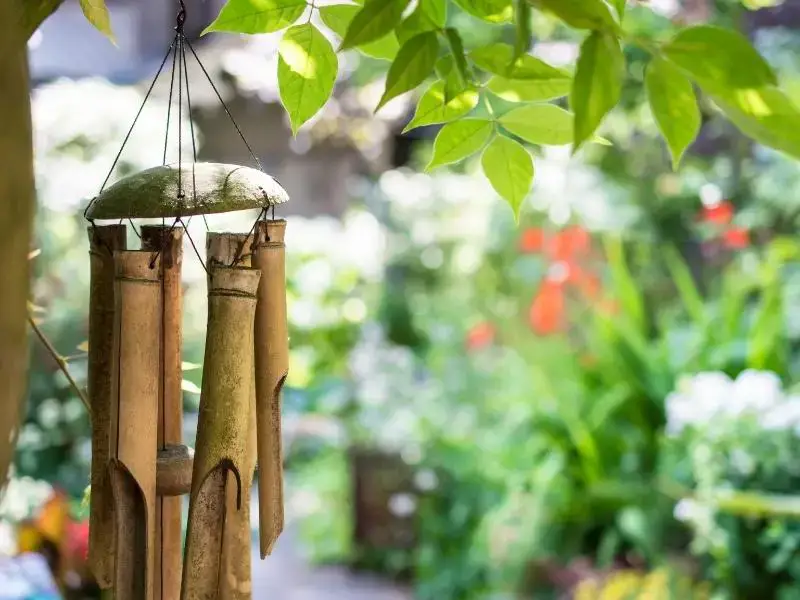
Aside from acting as soothing sounds of melody, wind chimes can serve multiple purposes in modern times, and hence, yes, they are still popular.
- As a medium of meditation.
- As per the doctrines of Feng Shui, wind chimes can ward off negative energies.
- According to Chinese beliefs, wind chimes can cast away evil spirits and invite peaceful and positive energies from the cosmos.
- They can also offer a calming effect, thereby reducing stress.
- Other than this, the musical sound of wind chimes can help us relax and have a healing impact on our minds and bodies.
- They can also unlock emotional burdens and bring balance and well-being.
- Wind chimes find active use in sound therapy.
- Wind chimes can also be used for patio, window, and outdoor decorative purposes.
- They can be used to add some texture to your indoors.
- According to some schools of thought, wind chimes are also seen as harbingers of good luck.
- They can also be suspended from trees in the garden to scare away rodents, birds, and rabbits. For the same reason, they are also used in farmlands.
Choosing the Right Wind Chime
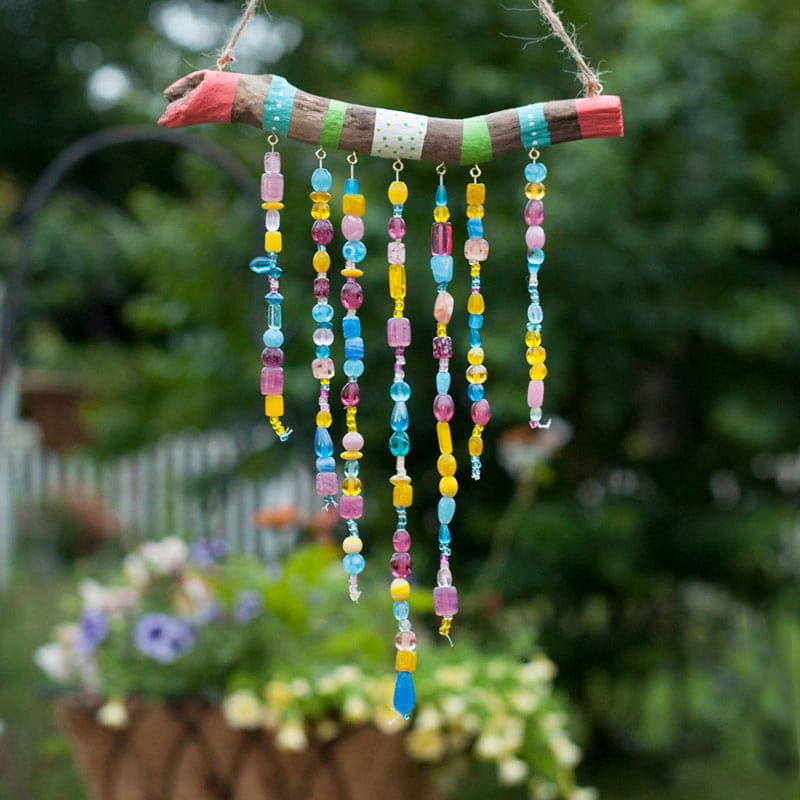
According to Feng Shui, one must choose wind chimes according to one’s personality and the effect one is looking for.
Wind chimes are made of different materials, so it’s advisable to pick the one you are naturally attracted to, as that’s your heart’s call.
Another way to choose wind chimes is to select the color that resonates with your element.
- If metal is your element, go for white hollow metallic wind chimes to invite joy, precision, communication, organization, and beauty.
- Bring home a black or blue chime if water is your element. It will help enhance wisdom and make improvements in your career.
- For Earth people, the color is yellow or brown, and such a wind chime can be purchased to bring in balance, groundedness, and self-care.
- Fire people associate closely with red, which will welcome inspiration and passion.
- Those who have wood as their element can pick a wood wind chime or one in green to welcome kindness, growth, and flexibility.
- Always go with bigger-sized wind chimes to have more positivity.
- Wind chimes with five cylinders are considered the most auspicious as they represent all five elements (metal, fire, water, earth, and wood).
- Hanging them near the main entrance is best to bring good luck and usher prosperity.
- You can also hang them in East or north-facing windows, patios, and porches in these directions.
- If you hang them outdoors in the garden, suspend them for tall trees to create the best impact.
Craft Your Unique Wind Chime
You need a few materials from the local hardware store to craft your wind chime. These include nylon string, aluminum tubes, wood pellets, and a drill.
Other things available in your home’s toolbox are a ruler, pencil, a hack saw, scissors, and sandpaper.
Drill the holes in the metal tubes to weave the nylon string through the structure. Now slice the metal tube into as many pieces as you want with the hacksaw or electric saw. Use an upholstery needle to perform the weaving.
Interested in making your wind chime?
Gather materials like nylon string, aluminum tubes, and a drill.
For detailed steps on constructing and restringing, see our complete DIY wind chime guide.
Conclusion
Thus, you know now that wind chimes still have multiple uses even in modern times, and they are more than just a simple musical instrument.
Some uses of wind chimes are for practical purposes, while others are for creating a positive aura and ushering prosperity into the lives of people occupying a particular residence.
Hence, they are still in demand and can be a wonderful addition to your home, whether you hang them outdoors or indoors.
We have also provided a guide on choosing the right wind chime for you, as they are available in various materials and colors.

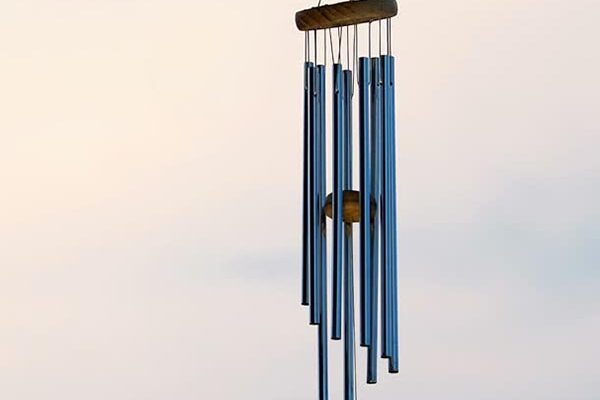
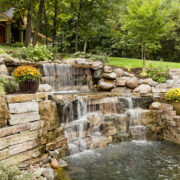
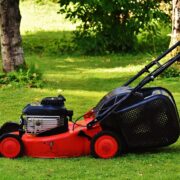



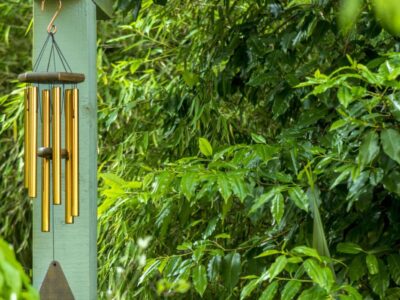


Comments